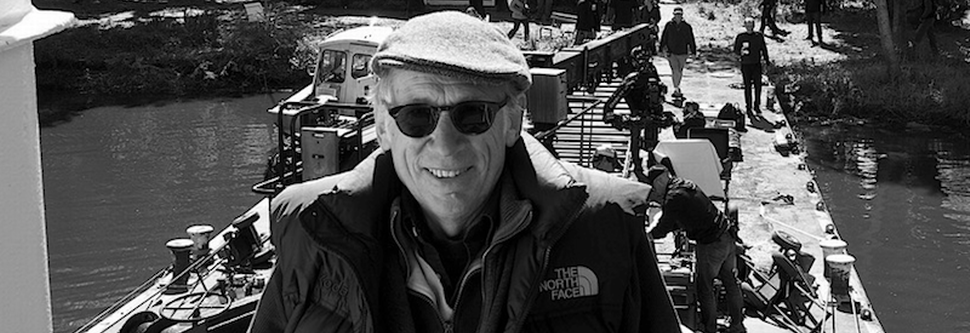
OLIVER STAPLETON, BSC TALKS ANAMORPHIC
Oliver Stapleton, BSC is the director of photography behind a score of beloved and influential films such as My Beautiful Laundrette, The Grifters, Sammy and Rosie Get Laid, and Absolute Beginners. Over the course of more than fifty narrative projects, he has built long and fruitful collaborations with directors of human dramas like Julien Temple, Stephen Frears, and Lasse Hallström. The latest example is Anne Fletcher, the director of The Proposal, The Guilt Trip, and most recently, Hot Pursuit – all shot by Stapleton.
When it comes to format, Stapleton and Fletcher prefer the distinctive image qualities inherent in the anamorphic 35 mm film format. All three of their collaborations were shot in the “squeeze” format using Hawk anamorphic lenses from Vantage Film.
“Anamorphic alters the image in three ways,” says Stapleton. “One is the geometry. Then there’s the nature of the out-of-focus image, which people call bokeh – it’s elliptical as opposed to circular. And the image is more out of focus given a certain aperture and lens than it would be in spherical. And then there’s optical quality and frame size – a 50 mil lens is a wide lens in anamorphic, and in spherical, it’s a standard lens. That perspective is often perceived as more cinematic.”
Cinematographers either love it, or they don’t, according to Stapleton. He says that concerns about aperture are less relevant these days because of improved exposure sensitivity.
“I’ve always liked it, and I’ve always shot it when possible,” he says of the format.
In years past, Stapleton worked with a range of anamorphic glass, but about ten years ago, he discovered the Hawks.
“I really liked the way they were constructed, mechanically,” he says. “I liked the feel of them. I thought, ‘These are seriously beautifully made lenses.’ I felt they had a really good look, and I started down the road of using them.”
Over the past decade, Stapleton has used Hawk lenses on half a dozen features, including his last four films – The Guilt Trip, The Best of Me, Unfinished Business, and Hot Pursuit. In that period, Vantage designed and built three sizes of front anamorphic zooms to complement their prime lenses. The T 2.8 Hawk V‑Plus Front Anamorphic Zooms come in 30-60mm, 45‑90mm and 80-180 mm sizes.
“The zooms were a real step forward because they match the primes perfectly,” Stapleton says. “They’re not too big and they also have a decent speed. So suddenly you have a very handy range available, and you don’t have to have a whole other set of primes. That made a really good package.”
The Guilt Trip was the story of a mother and son who take a cross-country road trip. The cast featured starred Barbra Streisand and Seth Rogan, and the medium was 35 mm film. At the time, Stapleton said, “If you want to make actors, and particularly a woman, look good, shoot anamorphic. There are optical reasons for that advantage. It’s a slightly softer lens, which helps you. The perspective is better for 99% of human faces.”
Unfinished Business, a comedy starring Vince Vaughn, David Franco, and Tom Wilkinson, was done with 3‑perf 35 mm film, and Hawk V‑Lite and V‑Plus 1.3x anamorphic lenses, which squeeze the image by a factor of 1.3 rather than 2, resulting in a more subtle anamorphic flavor.
On The Best of Me, directed by Michael Hoffman, Stapleton paired Hawk V‑Lite and V‑Series anamorphics with the ARRI ALEXA XT digital camera.
“Michael has shot digital for some years now, but I was able to convince him that in order to make it look good, it would really help if we went on anamorphic with the 4X3 chip,” says Stapleton. “We tested the 2:1 Hawks, and compared them with Super 35 and retro, vintage lenses, but we liked the perspective of anamorphic and opted for them. I preferred how the ALEXA looked at 1600 ASA, so I underexposed everything by one stop, relative to the chip. I liked how that felt.”
Hot Pursuit, shot on anamorphic 35 mm film and directed by Fletcher, stars Reese Witherspoon as a by-the-book cop protecting a drug boss’s widow as they are chased across Texas.
Stapleton has always emphasized that there’s no excuse for dodgy equipment. “It’s incredibly important that the equipment you use on a shoot is extremely good, and that it’s been thoroughly tested by the cinematographer,” he says. “It’s our responsibility as DPs to provide faultless equipment, because it’s inexcusable to hold up production because of bad gear.”
He adds that Vantage Film backs up their lenses with dependable service.
“They’ve always been incredibly accommodating when we’ve run into trouble and needed something in some far part of the world at short notice,” he says. “They’re very good about shipping stuff. They’re very communicative; they remind me a little bit of how Samuelson’s used to be, back in the day. They formed relationships that lasted for life. I only came to Vantage in the second half of my career, but I think they are a company that a cinematographer can get involved with.”